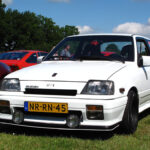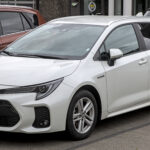Suzuki Swift 2010-2017: An Affordable Car with Surprising Quality
Introduction
The Suzuki Swift has long been a favorite in the supermini segment, and the 2010-2017 model continues that legacy. While Suzuki kept much of the same design, this generation brings plenty of improvements. With enhanced cabin space, lower running costs, and modernized safety features, the Swift competes with popular rivals like the Ford Fiesta and Vauxhall Corsa. Despite its affordability, the Swift offers a quality that makes it a standout in the small car market.
A Budget Car That Doesn’t Feel Like One
When people buy budget cars, it’s usually to save money—not necessarily because they want to. However, the Suzuki Swift challenges this notion by offering mainstream quality at a budget price. Suzuki built upon the success of the previous generation, which sold over 1.8 million units globally. Though it may look like a minor evolution from its predecessor, the updates are substantial.
Visually, Suzuki opted for evolution rather than revolution. The Swift retains its familiar, charming design with minimal exterior changes. What’s more important is what’s underneath the surface. This model boasts improved fuel efficiency, smarter safety features, and a bigger, more comfortable interior. All these improvements come at a price that undercuts most competitors in the same class.
Driving the Swift: Fun and Balanced
Behind the wheel, the Swift feels more refined than its predecessor. Suzuki tweaked the chassis and suspension to provide a more grown-up, balanced driving experience. The car’s short, squat stance gives it an agility that’s perfect for zipping through city streets or tackling winding country roads.
Under the hood, the Swift offers a 1.2-liter petrol engine with 94 PS. It delivers solid performance for its size, accelerating from 0 to 60 mph in 12.2 seconds, with a top speed of 103 mph. While you might need to rev the engine higher to get the best performance, it feels lively once you hit 4,000 RPM. At higher revs, the engine’s refinement suffers slightly, but the trade-off is a fun and responsive driving experience.
One of the standout features of the Swift is its handling. The car’s stiff body shell, along with strong grip and effective body control, makes it surprisingly enjoyable to drive. Though Suzuki’s customer base may not be looking for a sporty drive, the Swift delivers a satisfying experience for those who appreciate a more spirited ride.
Interior: Bigger and More Practical
Though the Suzuki Swift may look similar to the previous model on the outside, its interior space has grown significantly. The car is 90 mm longer and 5 mm wider than before, with an additional 50 mm added to the wheelbase. These changes translate into more legroom and headroom, especially in the rear seats.
In the back, two adults can sit comfortably, making the Swift one of the roomier options in the supermini class. The taller roofline also contributes to a more spacious feel, even on longer journeys. However, the larger cabin does come with a trade-off: boot space. At 204 liters, the Swift’s trunk is smaller than some competitors. That said, you can fold down the 60/40 split rear seats to increase cargo space to 528 liters, though the load floor isn’t completely flat.
The interior features several practical storage options, including bottle holders in every door, a decent-sized glovebox, and compartments in the center console. The materials used are of higher quality than you might expect from a car at this price point, with chrome accents and neatly designed details adding a touch of sophistication.
Pricing and Value for Money
The Suzuki Swift is priced between £10,000 and £14,000, depending on the model and features. You’ll pay an extra £500 if you opt for the five-door variant. These prices are incredibly competitive when compared to other superminis. For instance, a Ford Fiesta with less power costs about £500 more, and a Vauxhall Corsa with less power can be as much as £1,400 more expensive.
Standard equipment in the Swift is also impressive for the price. All models come with electric front windows, remote central locking, electric mirrors, and a decent CD stereo with MP3 compatibility, USB connectivity, and steering wheel controls. Suzuki also includes its ESP stability control system as standard, a feature that many competitors charge extra for.
When it comes to safety, the Swift excels with seven airbags, including a driver’s knee airbag. These features helped the car earn a five-star Euro NCAP safety rating, a mark of quality and reassurance for potential buyers.
Running Costs and Efficiency
One of the Swift’s strengths is its low running costs. With a 1.2-liter petrol engine, you can expect to achieve 56.5 mpg on the combined cycle, with CO2 emissions of just 116 g/km—numbers that rival even some diesel models. If you opt for the 1.3-liter diesel engine, fuel efficiency improves even further, reaching 67 mpg with CO2 emissions of 109 g/km.
Insurance costs for the Swift are also relatively low, and Suzuki offers a comprehensive warranty. These factors contribute to the car’s overall affordability, making it a great option for budget-conscious buyers who don’t want to compromise on quality.
Conclusion: The Swift’s Secret Appeal
Though the Suzuki Swift may not be the first car that comes to mind for supermini buyers, it should definitely be considered. It’s a more mature, grown-up version of its predecessor, offering real value for money with no major compromises. For those who want a reliable, fun-to-drive car with plenty of features, the Swift is an excellent choice.
I recently came across someone who had a similar experience with the Suzuki Swift, and their enthusiasm for the car inspired me even more. If you’re interested in hearing more about their thoughts on the Swift, check out their review here: Suzuki Swift | Full Review.






